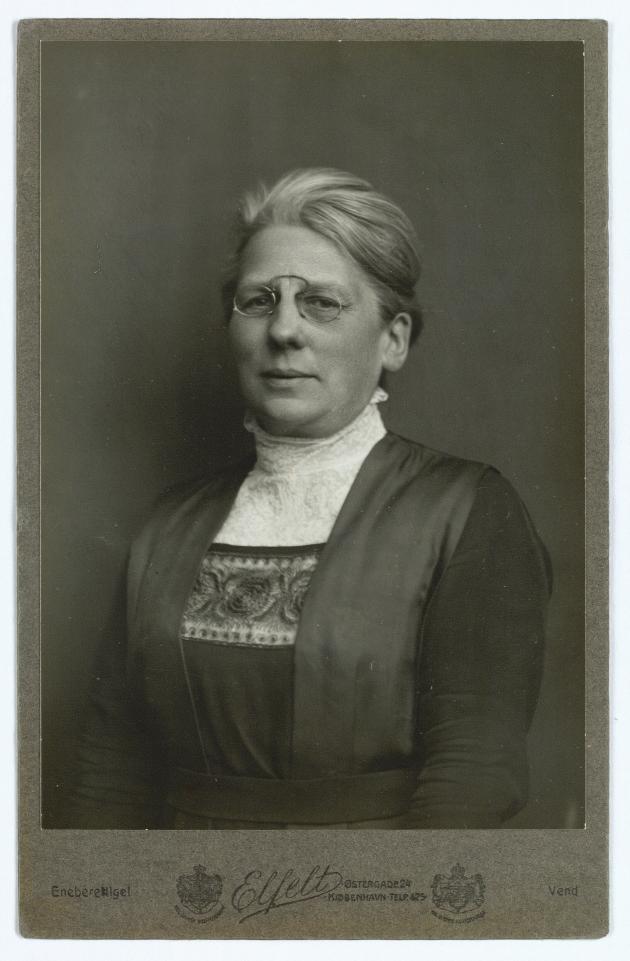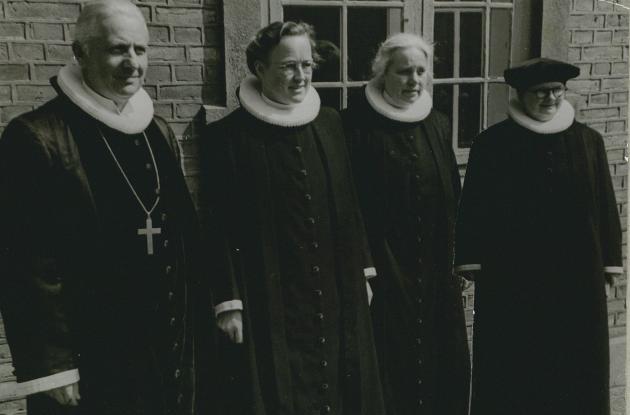The struggle for female priests
In 1921 women gained access to all public offices - except in the church and the military! Thus, female priests became one of the most important demands of the women's movement.
On 28 April, 1948, the first three female theologians in Denmark were ordained to the priesthood. It took place in Odense Cathedral, where approximately 2000 people including the Danish media witnessed Bishop Hans Øllgaard's ordination. Also present were the chairwomen of the Danish Women's Society and the Danish Women's National Council, who, after 30 years of hard lobbying, could finally rejoice that there was now equality in the Danish National Church. Bishop Øllgaard was the only one of seven bishops who was willing to carry the recently passed law, which gave female theologians access to the priesthood.
The law had been under way since 1918, when Elna Munch - just elected to the Danish Parliament - raised the issue during the Finance Act debate. Church Minister Thorvald Povlsen replied that a law would probably be needed before female theologians could function as priests, but that he had difficulty seeing that there should be anything to prevent such a law from being implemented. In that he was wrong!
The Act of 1921

Photo: Lars Peter Elfelt
When Prime Minister Zahle presented the "Proposal for a Act on Women's Access to Service and Duties" in Parliament the following year in 1919, it was precisely women's access to clerical positions that became the focus of the debate, and which ended with the law being passed in 1921 with the proviso that it did not apply within the church and the military.
Opponents believed that it was the Danish National Church itself that should decide whether it wanted female priests or not, while the supporters saw it as a state matter. And when the opposition within the Danish National Church was great, both among the employees and in the parish councils, the changing governments hesitated to change the law again and again up until 1947.
Opposition to female priests within the church was examined several times until the law was changed in 1947. For example, in 1921, questionnaires were sent out to all parish councils regarding their views on female priests. One of the questions was:
“Does the Parish Council find Anything to recall against the Fact that female theological Candidates can be appointed Priests when the Candidate in question has been nominated by a Majority of the Parish Council in question?
“
4,759 answered yes, 1926 answered no. A large majority thus decided that even when a majority in a parochial church council wanted to hire a female priest, they should not be allowed to do so.
The struggle for female priests
For the women's movement, the issue was extremely principled. Equal rights for women and men should apply to all parts of the public labour market. And the struggle for female priests therefore became one of the Danish Women's Society's key issues in the many following years.
Where the topic of female priests had been raised at regular intervals in the Danish Women's Society in the years before 1921, from 1921-1947 it was a fixed agenda item at all national meetings. The strategy was to keep the pot boiling by repeatedly addressing Parliament, the church minister and the bishops, and by writing articles and discussion pieces on the matter for the newspapers.
Meanwhile, the Danish Women's Society did its part to promote the female theological candidates by asking them to conduct the service at the annual national meetings, among other things.
The Act of 1947
It was a concrete inquiry to the church minister from the congregation in Nørre Ørslev on Falster in 1947 that became the primary reason for the change in the law of 1921. The congregation wanted to hire theologian Johanne Andersen as a priest and asked to have the hire approved by the ministry. And since the wish now came from the church itself, it was decided in Parliament to change the wording of the law from men to persons in the section on who had access to offices in the Danish National Church. Thereafter, it was up to the individual parochial church council to decide whether to hire a male or female priest.
A years-long struggle for formal equality in the people's church was over, but the opposition to female priests was not. A very large number of priests protested the law, and many church councils continued to hire male priests only. Over time, however, the Danish National Church changed its attitude toward female priests. In 1995, the first female bishop Lise-Lotte Rebel was elected, and today the majority of priests in the national church are women.
